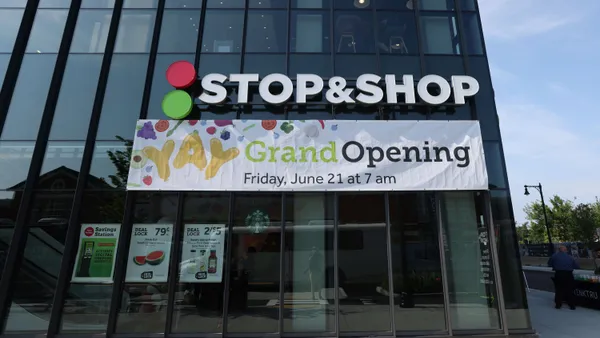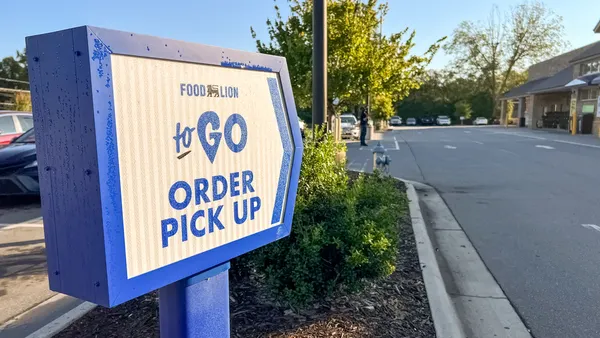Dive Brief:
- Walmart is gaining on industry leader Amazon when it comes to the online grocery space, according to a survey from financial firm Citi. The firm surveyed 2,000 consumers, more than 200 supermarket managers and its own analysts.
- Based on responses, 29% of consumers ranked Walmart the best for delivery, followed by Amazon at 25%. Local grocers, Kroger and Target rounded out the top five. The two retail giants are also getting closer when it comes to market share. About 23% of those surveyed said they buy groceries online at Walmart and 25% purchase from Amazon, the survey found.
- Results show that though Amazon and Walmart dominate, there are some key players lining up to challenge them. Kroger has the highest click-and-collect penetration, while Costco leads the way for online growth potential, according to Citi.
Dive Insight:
E-commerce is a growth opportunity for most grocery retailers, and it has proven to be a juggernaut for Walmart. A recent Coresight Research study found that 36.8% of U.S. consumers bought groceries online in the past year, a significant increase from 23.1% the previous year. The data also said that 62.5% of people who bought groceries online purchased from Amazon, but that Walmart’s share of the market grew from 25.5% in 2018 to 37.4% this year.
Other recent research has found that grocery pickup has been the strongest component of Walmart's online grocery offering, but Citi's findings indicate that its delivery service is starting to resonate with shoppers as well. Not only was it ranked best, respondents also said it was the most accessible.
Delivery from Amazon and Walmart are well-matched when it comes to convenience and prices, though a $119 annual Prime membership could actually come out cheaper than Walmart's delivery fee of $9.95 per grocery order depending on how frequently shoppers order groceries for delivery. Walmart may need to address the fee in the future to keep its momentum.
According to a new report from Coresight Research, millennials are driving the online grocery trend, but many millennials are also shopping in-store at mass retailers like Walmart. Their customers tend to be younger, educated and married with families. This demographic overlaps with Amazon’s Prime members who, much like the Walmart shopper, are busy, want convenience and are budget driven.
Despite recent price pressure, Citi said that Kroger has some advantages in online grocery, too. The company uses Instacart for delivery as well as its own Kroger Ship service, which offers free delivery for orders over $35, and Kroger is also piloting autonomous grocery delivery with Nuro. Citi found that its click-and-collect service is particularly successful with shoppers, and among store managers, it is also winning for in-store experience. About 31% of shoppers buy groceries from Kroger or one of its banners, according to Coresight Research.
Target shouldn’t be overlooked. About 10% of those surveyed by Citi said they've purchased groceries online from Target, and 6% say it has the best delivery. For in-store purchasing, Coresight found that about 49% of grocery shoppers have purchased at Target in the past year. The company had a strong last quarter, attributing some of its success to its investment in delivery, though the retailer still struggles to be seen as a grocery store in the eyes of some shoppers.













